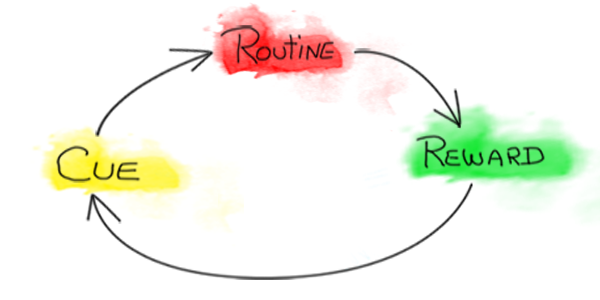Creating new habits and behaviors
Your emotional brain is part of your limbic system which doesn’t respond to cognitive learning. It responds to the same behavioral techniques by which successful habits are created—and those techniques are well known.
Rewarding the Desired Behavior
Any habit or behavior exists for one simple reason: the behavior is being rewarded. It makes sense that to stop bad habits and bad behaviors one must stop rewarding those bad behaviors and bad habits. Conversely, to create a new behavior or habit, that new behavior must be rewarded if it is to become a habit; otherwise, it fades away after several attempts of creating it. A good example is that most techniques learned in seminars are forgotten and out of practice within six weeks of taking the seminar.
In order to train your brain’s limbic system to perform a new behavior you must be constantly reminded to do the new behavior. Remembering on your own rarely results in a new behavior and is the main reason why new year’s resolutions rarely succeed.
Rewarding behavior to create a new habit isn't enough
It makes sense that if we want to create a new behavior, then rewarding that behavior when it happens will reinforces and increase the likelihood of a repeat of that behavior. But, it's not enough. The problem is that when we are creating a new behavior, rewarding that behavior establishes the behavior as a desirable behavior, but it doesn't guarantee a repeat of the behavior. It's only when a behavior is repeated that the limbic system memorizes the behavior to where it becomes an automatic response. Without the repetition, the behavior doesn't get burned into the limbic system's memory.
A watching mechanism creates repetition
A behavior (routine) being rewarded (reward) is a major step in creating a habit.  However, this process doesn't work unless the behavior is repeated on a continued basis. Hence, for the reward to have a lasting effect, there must be a mechanism (cue) to instigate the routine again until the behavior becomes a habit. This watching mechanism (cue) is the process that ensures the behavior is repeated.
However, this process doesn't work unless the behavior is repeated on a continued basis. Hence, for the reward to have a lasting effect, there must be a mechanism (cue) to instigate the routine again until the behavior becomes a habit. This watching mechanism (cue) is the process that ensures the behavior is repeated.
To successfully create a habit, a behavior (routine) must be rewarded (reward) and then there must be a watching mechanism (cue) to instigate the routine again and again until the behavior becomes automatic. It is the repetition of the behavior that allows the behavior to be memorized by the emotional brain and thus become an automatic response at the subconscious level.
Applying the process
Now that we know the secret to creating lasting new behaviors, it's time to understand the methodology to applying the secret.
Graphics & Photography Copyright © iOdyssey, © Shutterstock or ©iStockphoto



